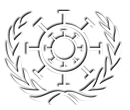Michael Taussig wanders around the room of the Red Bar at the Vienna Volkstheater, in between the guests who have already found their places and are sipping their drinks within red walls, velvet and marble, awaiting an evening, which promised discussions of new relationships between humans and the technical world. The evening begins; Felix Stalder takes the stage, introducing the hours to come and informing us that El Iblis Shah, could unfortunately not attend the evening due to visa restrictions, instead Konrad Becker will be presenting his question and leading the discussion instead, alongside Katja Mayer.
Felix Stalder introduces the context 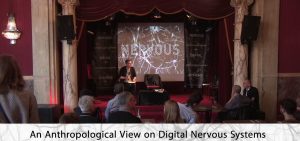 of the evening with the question of automation vs. autonomy. Using the example of the magician, completing the biggest feat, making himself disappear; he asks whether there are any true autonomous systems, or whether the magician simply moves inside of the machine and closes the door from the inside, hiding within his own trick. To view this new world, we require a mode of perception capable of understanding this contemporary configuration. Stalder continues describing Michael Taussig’s critical examination of language, and descriptions of magic being something required to protect us from other magic. After this introduction and the notion of countermagic, Michael Taussig takes the stage.
of the evening with the question of automation vs. autonomy. Using the example of the magician, completing the biggest feat, making himself disappear; he asks whether there are any true autonomous systems, or whether the magician simply moves inside of the machine and closes the door from the inside, hiding within his own trick. To view this new world, we require a mode of perception capable of understanding this contemporary configuration. Stalder continues describing Michael Taussig’s critical examination of language, and descriptions of magic being something required to protect us from other magic. After this introduction and the notion of countermagic, Michael Taussig takes the stage.
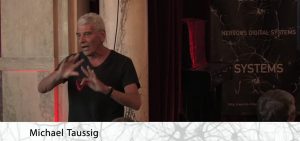 Michael Taussig begins with the introduction of apotropaic magic, a magic that is required to resist other magic. Taussig toys with the concept that to destroy a thing, one has to become it. Or more accurately a thing cannot be destroyed without that, which destroyed it having to take up its qualities. He uses it to talk about “the mastery of non-mastery”, which to him is an anarchistic process directly critiquing Horkheimer’s and Adorno’s ideas regarding the domination of nature. Taussig outlines a desire to use image and language to challenge what passes as scholarship whilst still engaging in it, using language to contest reality. The need to become a thing, a process he calls the mimetic faculty, in symmetry of nature. Drawing upon Adorno’s writing about Benjamin Taussig leads to concepts of imitations and mimicry, thing and thingship. Something he will later explore through Benjamin’s short story about the juggler Rastelli, but what he first approaches through the relationship between nature and the human.
Michael Taussig begins with the introduction of apotropaic magic, a magic that is required to resist other magic. Taussig toys with the concept that to destroy a thing, one has to become it. Or more accurately a thing cannot be destroyed without that, which destroyed it having to take up its qualities. He uses it to talk about “the mastery of non-mastery”, which to him is an anarchistic process directly critiquing Horkheimer’s and Adorno’s ideas regarding the domination of nature. Taussig outlines a desire to use image and language to challenge what passes as scholarship whilst still engaging in it, using language to contest reality. The need to become a thing, a process he calls the mimetic faculty, in symmetry of nature. Drawing upon Adorno’s writing about Benjamin Taussig leads to concepts of imitations and mimicry, thing and thingship. Something he will later explore through Benjamin’s short story about the juggler Rastelli, but what he first approaches through the relationship between nature and the human.
Wh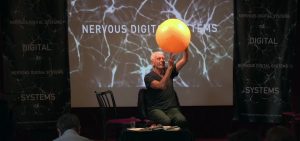 ile nature cannot be dominated, as we stand in a constant state of mimicry with one another, he draws a parallel between crazed weather and crazed politics. Again, using language and stylistic wording to play with a performative element of scholarship, Taussig stands on stage, inflating a yellow rubber ball, the ball is the sun, the room giggles, whilst the ball slowly inflates, the sound of the pump filling the space. He proposes that the heat of the sun brings culture and nature closer together through the use of the mimetic faculty. They imitate each other, this is not a concept of anthropomorphism, the mimetic faculty gives no preference to the human, there is no hierarchy, only exchanges, and clones of one another, as all parties take on qualities of the other in the mimicry between nature and culture. The axis of contemporary reality stretches between wild weather and crazed right-wing politics, both tearing destruction through Europe and the world. With this, a new slide appears behind him on the projector: The artist Symerin Gill, standing in a palm tree plantation. Her face covered by leaves, palm nuts placed in front of her belly, it is not a human who is seen in the photograph but a composite, a palm tree with legs or a human who is turning into a palm tree. Taussig calls palm oil the ‘metamorphic sublime’, a phantom elixir capable of transforming into anything between food and fuel. But this metamorphic quality has become a part of our reality, within our digital world; reality has taken on the quality of changeling, constantly in flux, as it mimics a constant new flow of information and consequences. Drawing on Flaubert Taussig describes our world where plants imitate animals, animals imitate plants, and we humans too live in constant metamorphic flux; wanting to become everything. The question stands, did this reality re-enchant nature, give magic and agency to that which previously was agent-less. Do we look for magic within our bodies, the body of the world, as objects gain agency within these bodily spaces?
ile nature cannot be dominated, as we stand in a constant state of mimicry with one another, he draws a parallel between crazed weather and crazed politics. Again, using language and stylistic wording to play with a performative element of scholarship, Taussig stands on stage, inflating a yellow rubber ball, the ball is the sun, the room giggles, whilst the ball slowly inflates, the sound of the pump filling the space. He proposes that the heat of the sun brings culture and nature closer together through the use of the mimetic faculty. They imitate each other, this is not a concept of anthropomorphism, the mimetic faculty gives no preference to the human, there is no hierarchy, only exchanges, and clones of one another, as all parties take on qualities of the other in the mimicry between nature and culture. The axis of contemporary reality stretches between wild weather and crazed right-wing politics, both tearing destruction through Europe and the world. With this, a new slide appears behind him on the projector: The artist Symerin Gill, standing in a palm tree plantation. Her face covered by leaves, palm nuts placed in front of her belly, it is not a human who is seen in the photograph but a composite, a palm tree with legs or a human who is turning into a palm tree. Taussig calls palm oil the ‘metamorphic sublime’, a phantom elixir capable of transforming into anything between food and fuel. But this metamorphic quality has become a part of our reality, within our digital world; reality has taken on the quality of changeling, constantly in flux, as it mimics a constant new flow of information and consequences. Drawing on Flaubert Taussig describes our world where plants imitate animals, animals imitate plants, and we humans too live in constant metamorphic flux; wanting to become everything. The question stands, did this reality re-enchant nature, give magic and agency to that which previously was agent-less. Do we look for magic within our bodies, the body of the world, as objects gain agency within these bodily spaces?
From here Taussig returns to the ball, it dances in his hands. He has come full circle and returned to Benjamin’s story about the great Juggler Rastelli, but now magic and agencies are familiar concepts. The story outlines a juggler who performs great feats with his ball; however, it is revealed that inside the ball is a dwarf, manipulating it. Until however one night, when the trick is performed flawlessly, and the juggler discovers that the dwarf was not present. The ball had become a living partner, the trick had happened without the trickery. For Taussig this is not just a lesson in proprioception, but also a lesson in objects and people discovering their relationship, the ultimate example of practice, where active will, abdicates its power within the body. The ball and the juggler develop a shared muscle memory. The mimicry is complete; the mastery of non-mastery has come full circle, as juggler and ball have come to share an understanding.
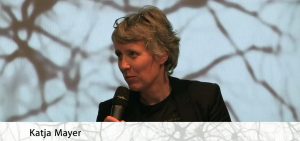 When Katja Mayer (University of Vienna) and Konrad Becker (World-Information Institute) join the discussion, questions about the ghost within the machine shift into the spotlight. What happens when machines evade our prophesized expectations? An example addressed by Mayer are algorithmic hallucinations, which occur when algorithms are trained to recognize images, however, instead of recognizing the training pattern, they see something completely different. The particular story is regarding images of rifles, where algorithms repeatedly see white elephants instead of rifles, even though there is no white elephant. The question posed is, if algorithms do not share the same perception as their programmers, what will happen if the engineers decide against their mimetic faculty, and the machines are permitted to see things in their own logic, in their own way, and not to align to the human set perspective within reality. If the machine says, there is an elephant, there must be an elephant. Responding to that Taussig evokes the notion of the limitedness of human perception. This cognizance of the algorithm is not a rejection of the mimetic faculty but an embracement as it allows the expansion of human capabilities. It is not one ideology vs. another but the art of getting the correct construction of language, since therein lays the fuel of the mimetic faculty. Magic lies within language, and one has to value the imagination present in any statement. However, the academic sphere presents a very constricted and set way of presenting an argument, and the greatest trick of magic is the concealment of itself.
When Katja Mayer (University of Vienna) and Konrad Becker (World-Information Institute) join the discussion, questions about the ghost within the machine shift into the spotlight. What happens when machines evade our prophesized expectations? An example addressed by Mayer are algorithmic hallucinations, which occur when algorithms are trained to recognize images, however, instead of recognizing the training pattern, they see something completely different. The particular story is regarding images of rifles, where algorithms repeatedly see white elephants instead of rifles, even though there is no white elephant. The question posed is, if algorithms do not share the same perception as their programmers, what will happen if the engineers decide against their mimetic faculty, and the machines are permitted to see things in their own logic, in their own way, and not to align to the human set perspective within reality. If the machine says, there is an elephant, there must be an elephant. Responding to that Taussig evokes the notion of the limitedness of human perception. This cognizance of the algorithm is not a rejection of the mimetic faculty but an embracement as it allows the expansion of human capabilities. It is not one ideology vs. another but the art of getting the correct construction of language, since therein lays the fuel of the mimetic faculty. Magic lies within language, and one has to value the imagination present in any statement. However, the academic sphere presents a very constricted and set way of presenting an argument, and the greatest trick of magic is the concealment of itself.
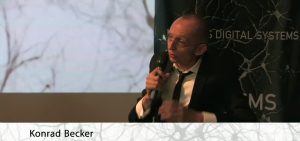 In the end mastery of non-mastery, is a tool, used to grapple with the reality of domination. Mastery of non-mastery is in a state of constant flux, as soon as you reach a position that position is changed and gone, however overall the concept is laced with the inherent hostility towards domination. The difficulty of the task lies in the problem or removing a master without another one stepping in its place. It’s a utopian concept, a conundrum. And as that discussion continues into the future, it becomes clear that language remains at the center of exercising the power of magic. Becker mentions a new trend in digital academia of abandoning theory; the belief grows that the trick can happen without the trick, when with enough data the world can just reveal itself, as long as w
In the end mastery of non-mastery, is a tool, used to grapple with the reality of domination. Mastery of non-mastery is in a state of constant flux, as soon as you reach a position that position is changed and gone, however overall the concept is laced with the inherent hostility towards domination. The difficulty of the task lies in the problem or removing a master without another one stepping in its place. It’s a utopian concept, a conundrum. And as that discussion continues into the future, it becomes clear that language remains at the center of exercising the power of magic. Becker mentions a new trend in digital academia of abandoning theory; the belief grows that the trick can happen without the trick, when with enough data the world can just reveal itself, as long as w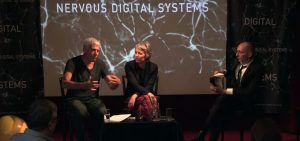 e have the right tools to view it. For Taussig that seems impossible, language and aesthetics will always remain part of the discussion. One can abandon neither theory nor magic in the academic realm, and digital algorithms become a part of the mimetic faculty a part of the proprioceptive practice between things and people.
e have the right tools to view it. For Taussig that seems impossible, language and aesthetics will always remain part of the discussion. One can abandon neither theory nor magic in the academic realm, and digital algorithms become a part of the mimetic faculty a part of the proprioceptive practice between things and people.
